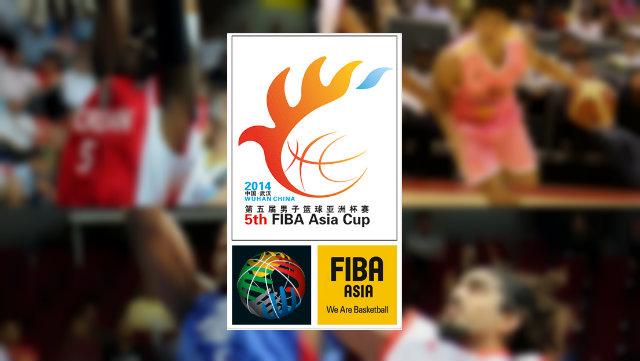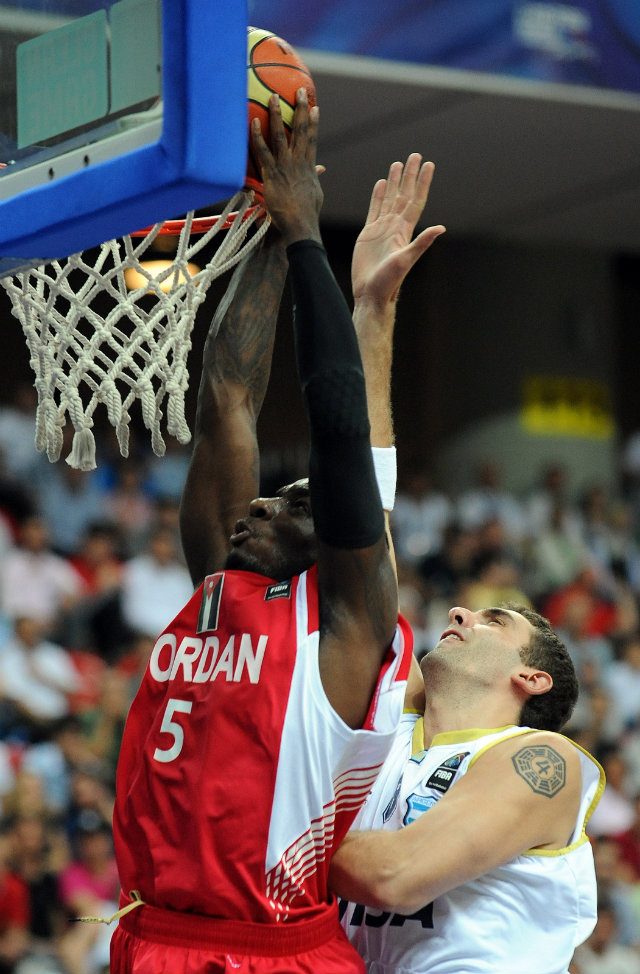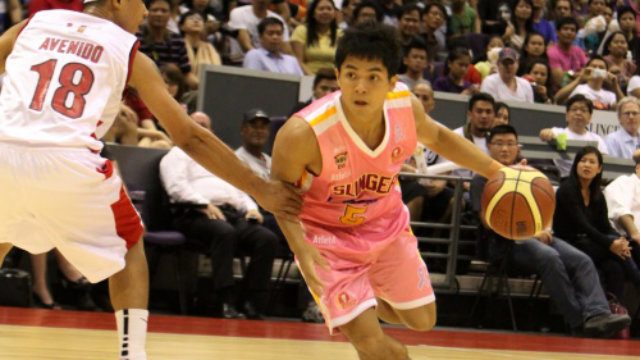SUMMARY
This is AI generated summarization, which may have errors. For context, always refer to the full article.

MANILA, Philippines – In less than a week’s time, the curtains will open on the 2014 FIBA Asia Cup, which will be held in Wuhan, China, the sight of the 2011 FIBA Asia Men’s Championships.
Nine teams are participating in this edition of what was formerly called the FIBA Asia Stankovic Cup (Uzbekistan backed out a couple of days ago). This tourney happens every two years, with the latest one held in Tokyo in 2012. The winner in that edition was Iran, which beat the host nation, 53-51, in the Finals.
Iran went through the whole field unscathed, beating India, Qatar, Taiwan, and Japan in the group stage, then upending Uzbekistan and the Philippines in the knockout rounds before repeating over the Japs in the Championship Game.
Taiwan was one of the stronger teams in that tournament boasting of many of its star players joining the roster. The iconic trio of Tien Lei, Tseng Wen-Ting, and Lin Chih-Chieh led the way for the Taiwanese, who missed making the top four after a close defeat at the hands of the Philippines (they would avenge this a year later in Manila). Two teams currently participating in this year’s edition missed the 2012 joust – Jordan and Singapore. Both, however, seem to be very promising as they swept their respective qualifying tournaments heading to Wuhan.
In this second of a four-part preview, we’ll take a look at the three teams from Group B: Jordan, Taiwan, and Singapore.
| Number | First Name | Last Name | Birthday | Height | Weight | Position |
|---|---|---|---|---|---|---|
| 4 | Fadel | Al Najjar | 02/04/1985 | 6’4 | 87 | PG/SG |
| 5 | Rasheim | Wright | 21/07/1981 | 6’4 | 85 | PG/SG |
| 6 | Ahmad | Al-Dwairi | 04/03/1993 | 6’11 | 100 | C |
| 7 | Ahmad | Al-Hamarsheh | 10/10/1986 | 6’6 | 93 | F |
| 8 | Mohammad | Hussein | 03/03/1990 | 6’11 | 102 | C |
| 9 | Khaldoon | Abu Ruqayah | 01/04/1983 | 6’8 | 98 | F |
| 10 | Sinan | Eid | 21/10/1991 | 6’6 | 84 | F |
| 11 | Wesam | Al-Sous | 24/04/1983 | 6’3 | 83 | PG/SG |
| 12 | Mahmoud | Abdeen | 25/12/1987 | 6’3 | 86 | SG |
| 13 | Mousa | Al-Awadi | 20/07/1985 | 6’2 | 85 | SF |
| 14 | Mohammad | Hadrab | 06/11/1984 | 6’7 | 95 | F |
| 15 | Abdallah | Abuqoura | 30/05/1984 | 6’8 | 98 | C |
There are three things that excite me about this current iteration of the Jordanian national team, also known as Al Nashama: veteran naturalized player Rasheim Wright is back, new coach Rajko Toroman is hell-bent on steering the team back to previous glory, and their two young centers – Ahmad Al-Dwairi and Mohammad Shaher Hussain – are developing at a rapid pace.

Wright, who led Jordan to an unprecedented silver medal finish in the 2011 FIBA Asia Men’s Championships, is back in tow, ready to drain those midrangers and threes once again. His replacement, Jimmy Baxter, struggled with chemistry and defense in Manila in 2013, but having Wright back should really make Jordan the feared team it once was. He’s turning 33 this month, though, which means he might not be as spritely as he once was. Still, his leadership and clutch shooting will matter the most for Toroman’s crew.
Speaking of Toroman, the former Iran and Gilas Pilipinas coach is now on his third tour of duty in FIBA Asia, hoping to, this time, helm Al Nashama back to the promised land. His track record speaks for itself as he coached Iran in its maiden title run in 2007 and coached Gilas in its first top four finish (2011) in a very long time. If there’s someone who can make Jordan a more dangerous team and bring out the best in its talents, then Toroman is the man.
And, finally, speaking of Jordan’s talents, its two young slotmen – Al-Dwairi and Hussain – both of whom stand 6’11, have garnered a lot of top-level experience after playing in Manila last year, in the 2014 WABA Championships, and for top Jordanian club Applied Science University. Expect both guys to play, quite literally, big roles for Jordan in this tournament and in the next handful of years.
| Number | First Name | Last Name | Birthday | Height | Weight | Position |
|---|---|---|---|---|---|---|
| 4 | Hsiao-Jung | Chen | 30/05/1990 | 6’5 | 90 | PF |
| 5 | Quincy Spencer | Davis III | 16/02/1983 | 6’8 | 102 | C |
| 6 | Chun-Yen | Peng | 05/12/1989 | 6’0 | 82 | PG |
| 7 | Chih-Wei | Lin | 10/07/1992 | 6’7 | 95 | C |
| 8 | Long-Mau | Hu | 22/12/1992 | 6’5 | 90 | PF |
| 9 | Ying-Chun | Chen | 09/06/1993 | 6’0 | 86 | PG |
| 10 | Chi-Min | Lu | 27/10/1989 | 6’2 | 89 | F |
| 11 | Cheng | Liu | 24/11/1990 | 6’4 | 85 | F |
| 12 | Yi-Hsiang | Chou | 04/02/1991 | 6’3 | 90 | PG |
| 13 | Te-Wei | Lee | 15/10/1991 | 6’7 | 105 | C |
| 14 | Jung-Hsuan | Chang | 18/12/1987 | 6’5 | 91 | SG |
| 15 | Kuan-Chuan | Chen | 30/12/1993 | 6’6 | 114 | C |
Missing the names mentioned in the introduction to this piece? Your eyes aren’t deceiving you. This is not Taiwan’s top national team roster participating in the FIBA Asia Cup. Yes, naturalized center Quincy Davis is present and will undoubtedly make them team competitive, but without key veterans to provide leadership and impart valuable experience, the ceiling for this team coached by Huang Wan-Lung isn’t sky-high.

That’s not to say there isn’t anybody to watch out for. This team, after all, will be led by no less than Taiwanese Super Basketball League MVP Liu Cheng. Unlike many of the national team, who are signed by big name clubs in the mainland, Liu plies his trade locally, and he actually led his club, Taiwan Beer, to the 2014 SBL Finals, losing to Taiwan Mobile in five games. Liu is known as a very versatile 6’4 wingman, someone who’s aggressive driving to the hole and someone who can hit long bombs in succession. He’s like a more aggressive and consistent version of JC Intal for Taiwan.
Aside from him, a couple of other guys worth our attention are young big men Hu Long-Mao (Kevin Hu) and Lee Te-Wei. Hu plays in Division 1 of the US NCAA (Chaminade Silverswords), and he’s noted as a power forward who can put the ball on the floor and shoot from the perimeter. Lee, for his part, is projected to be the successor of the likes of veteran centers Tseng Wen-Ting and Wu Tai-Hao. He will be the primary back-up of Davis in the middle. The Taiwanese might struggle winning this particular edition of the FIBA Asia Cup, but the fruits of their labor might help them win in the very near future.
| Number | First Name | Last Name | Birthday | Height | Weight | Position |
|---|---|---|---|---|---|---|
| 4 | Qing Huang | Toh | 16/01/1995 | 6’0 | 73 | SG |
| 5 | Wei Long | Wong | 18/08/1988 | 6’2 | 75 | PG |
| 6 | Hanbin | Ng | 13/01/1989 | 6’4 | 84 | SF |
| 7 | Xingyuan | Han | 31/05/1996 | 6’3 | 78 | SF |
| 8 | Desmond | Oh | 16/06/1986 | 5’11 | 73 | SG |
| 9 | David | Soo | 24/03/1994 | 6’2 | 83 | PF |
| 10 | Peter | Soo | 24/03/1994 | 6’1 | 80 | F |
| 11 | Shi Yang | Ng | 16/09/1989 | 6’0 | 73 | SF |
| 12 | Sheng Yu | Lim | 07/12/1990 | 6’4 | 86 | PF/C |
| 13 | Russel | Low | 07/05/1990 | 6’4 | 97 | C |
| 14 | Delvin | Goh | 14/04/1995 | 6’7 | 90 | C |
| 15 | John | Ng | 05/09/1994 | 6’3 | 80 | PG |
Singapore has defied the odds and its inherent limitations to rise as the second-best team in Southeast Asia. For the first time, they placed third in the 2013 SEA Games and then they went on to sweep the 2014 SEABA Cup after drubbing hosts Indonesia, 72-62, and Malaysia, 69-61.
In both games, ASEAN Basketball League veteran Wong Wei Long shone, scoring a total of 38 points and hitting 8 triples. He also averaged 8 rebounds and 4 assists in the two contests. Basically put, he’s Singpore’s #1 weapon, though he will really be put to the test against stiffer competition in Wuhan.

At around 25-26 years old, Wong is also already one of the team’s elder statesmen, along with Desmond Oh, who’s two years older. More than half the team was born in 1990 or later, which means Singapore, despite already garnering an impressive string of successes, seeks to improve even more moving forward.
By virtue of Uzbekistan’s withdrawal, Singapore should already feel like a winner, as they will automatically advance to the second round and play a total of six games against high-quality Asian competition. Clearly, there’s no way to go but up for this young, if undersized, crew.
READ PART 1: FIBA Asia Cup preview: China, India, Indonesia, Iran, and Japan
– Rappler.com
Add a comment
How does this make you feel?
There are no comments yet. Add your comment to start the conversation.